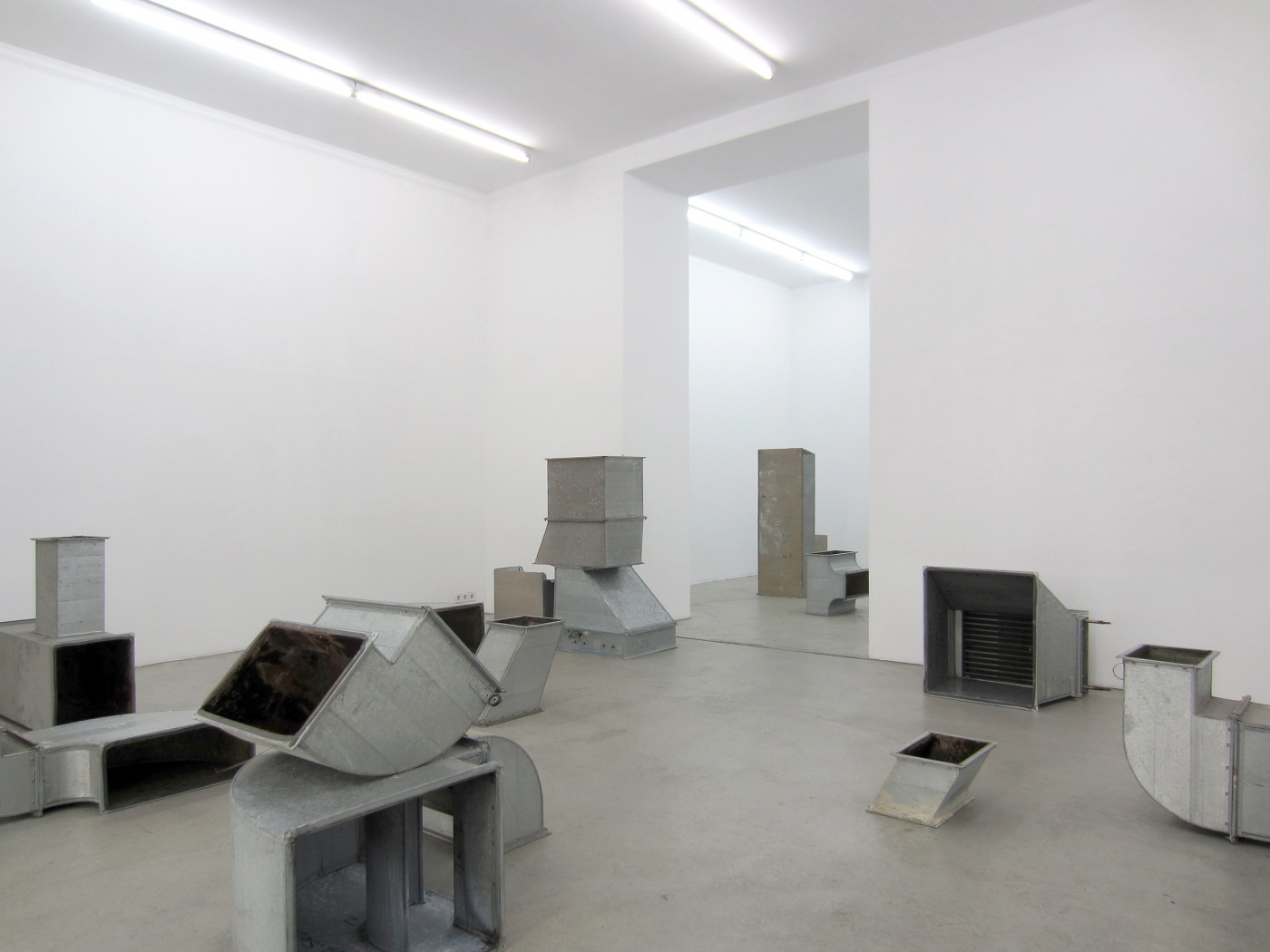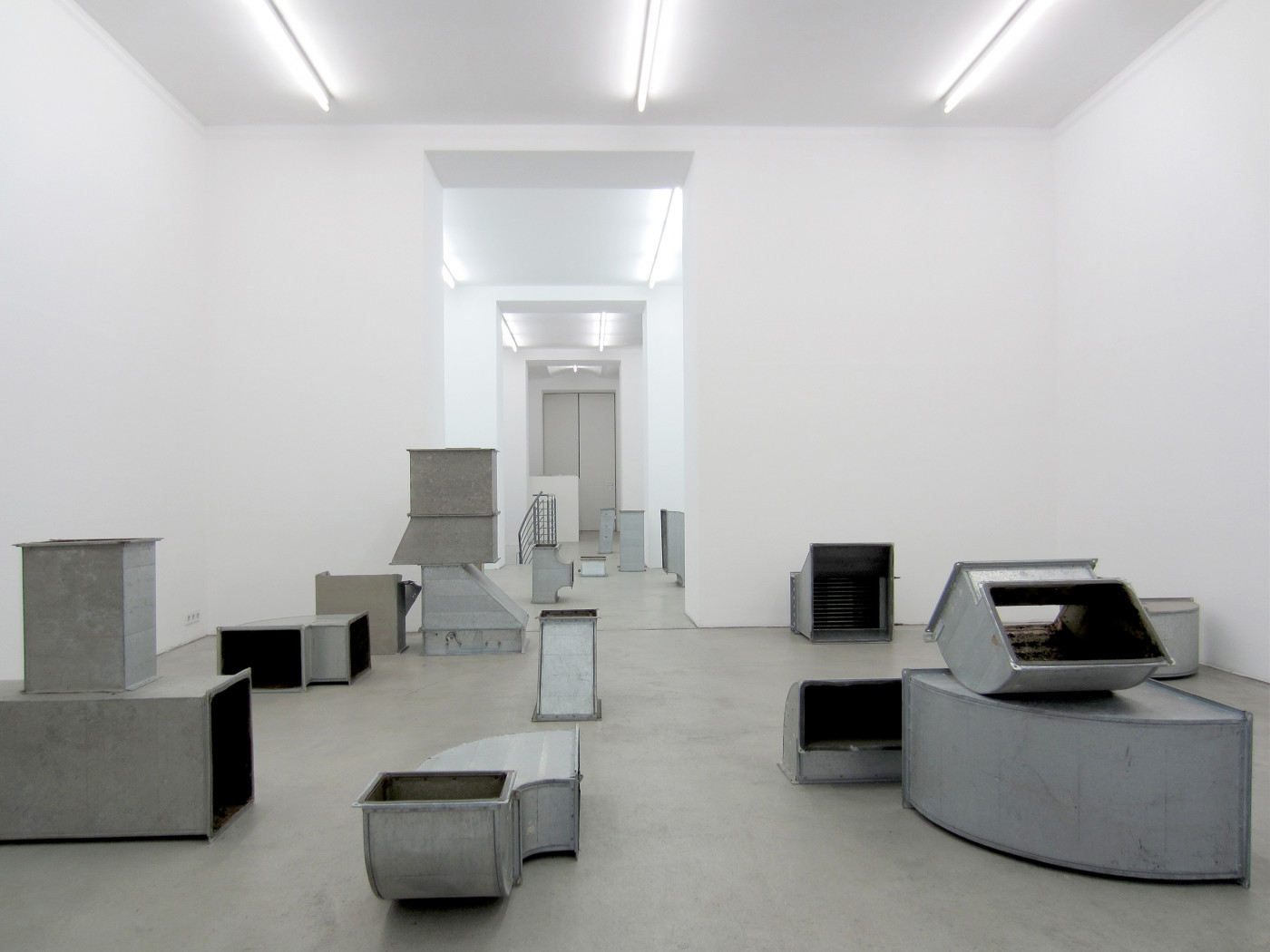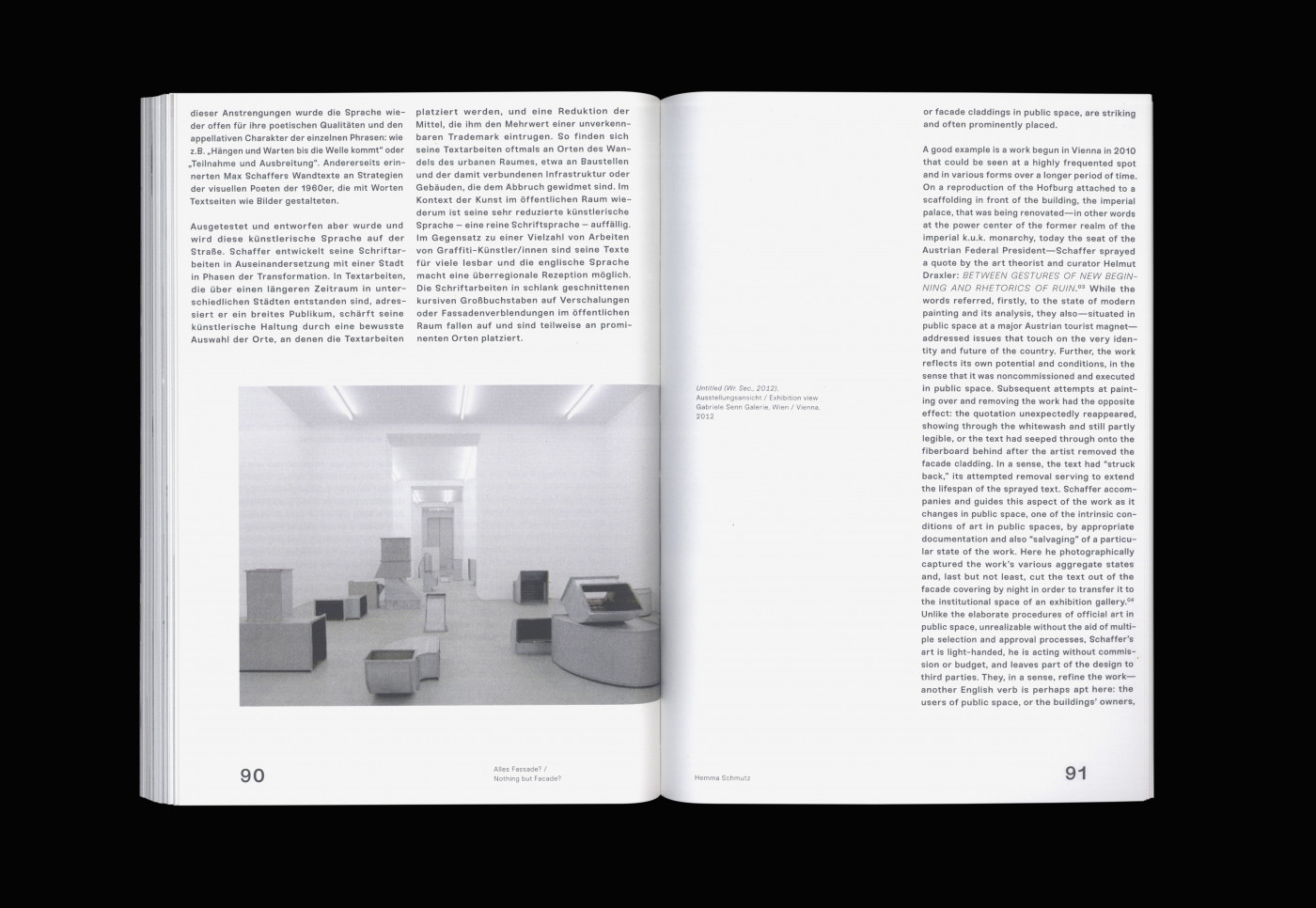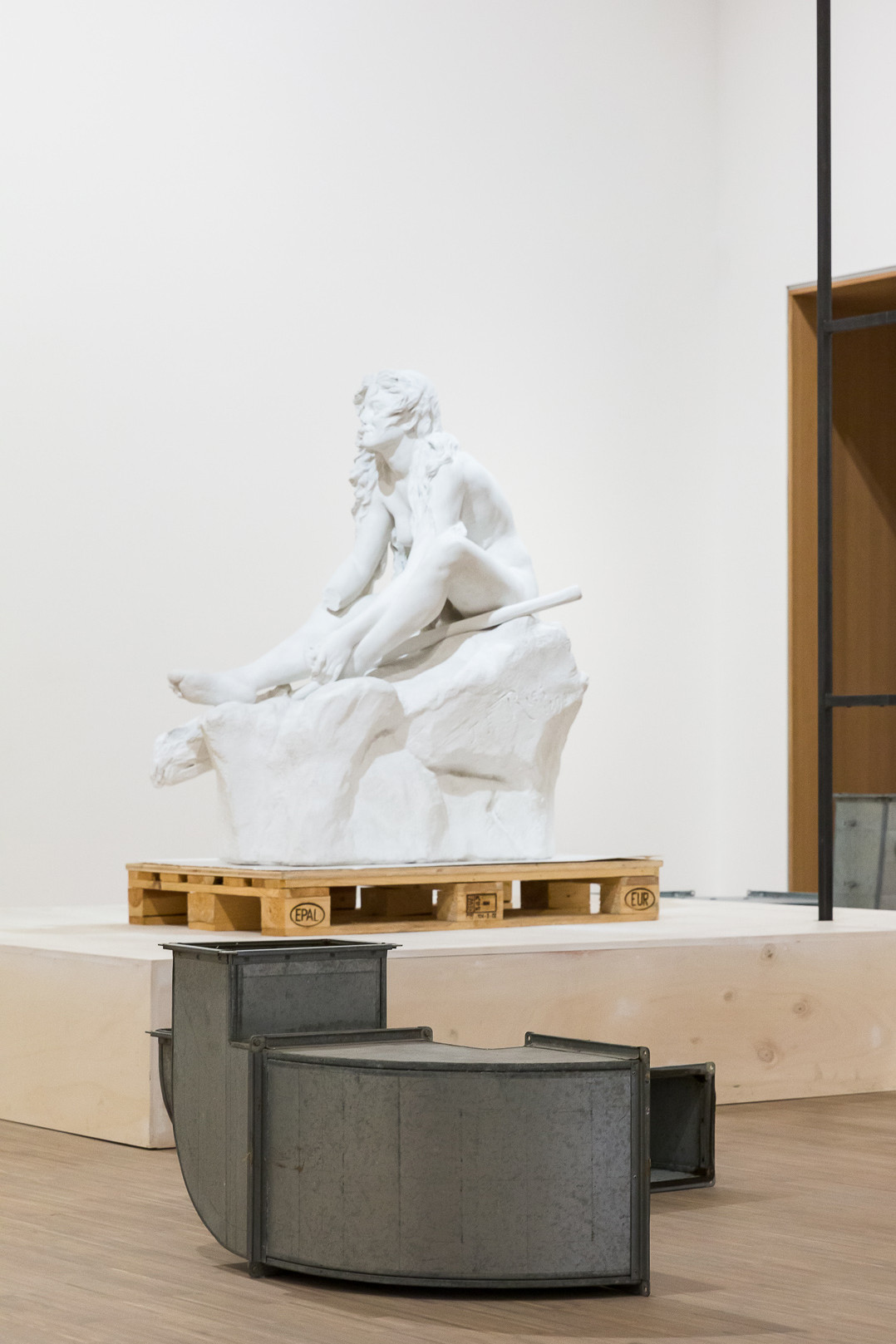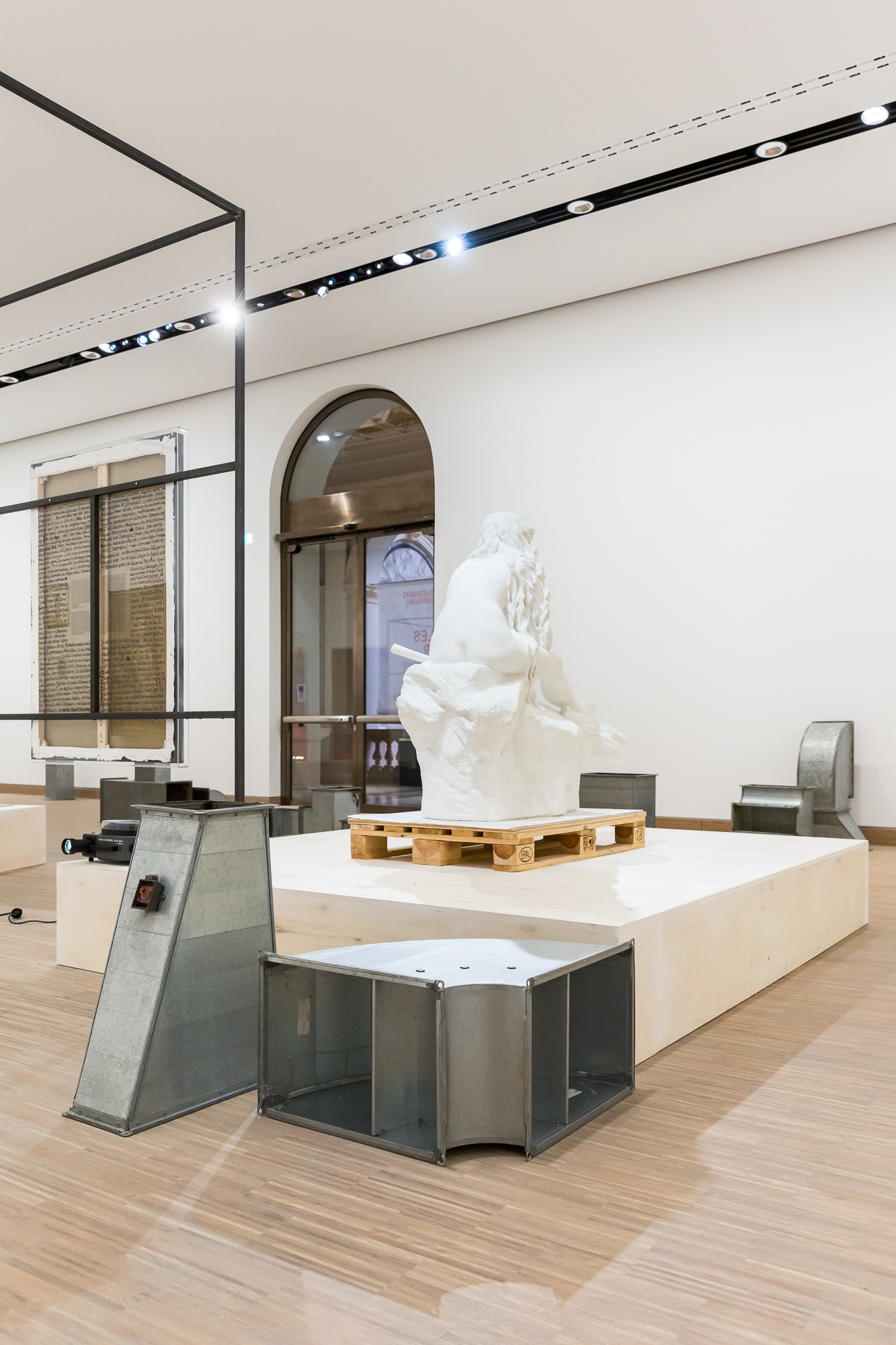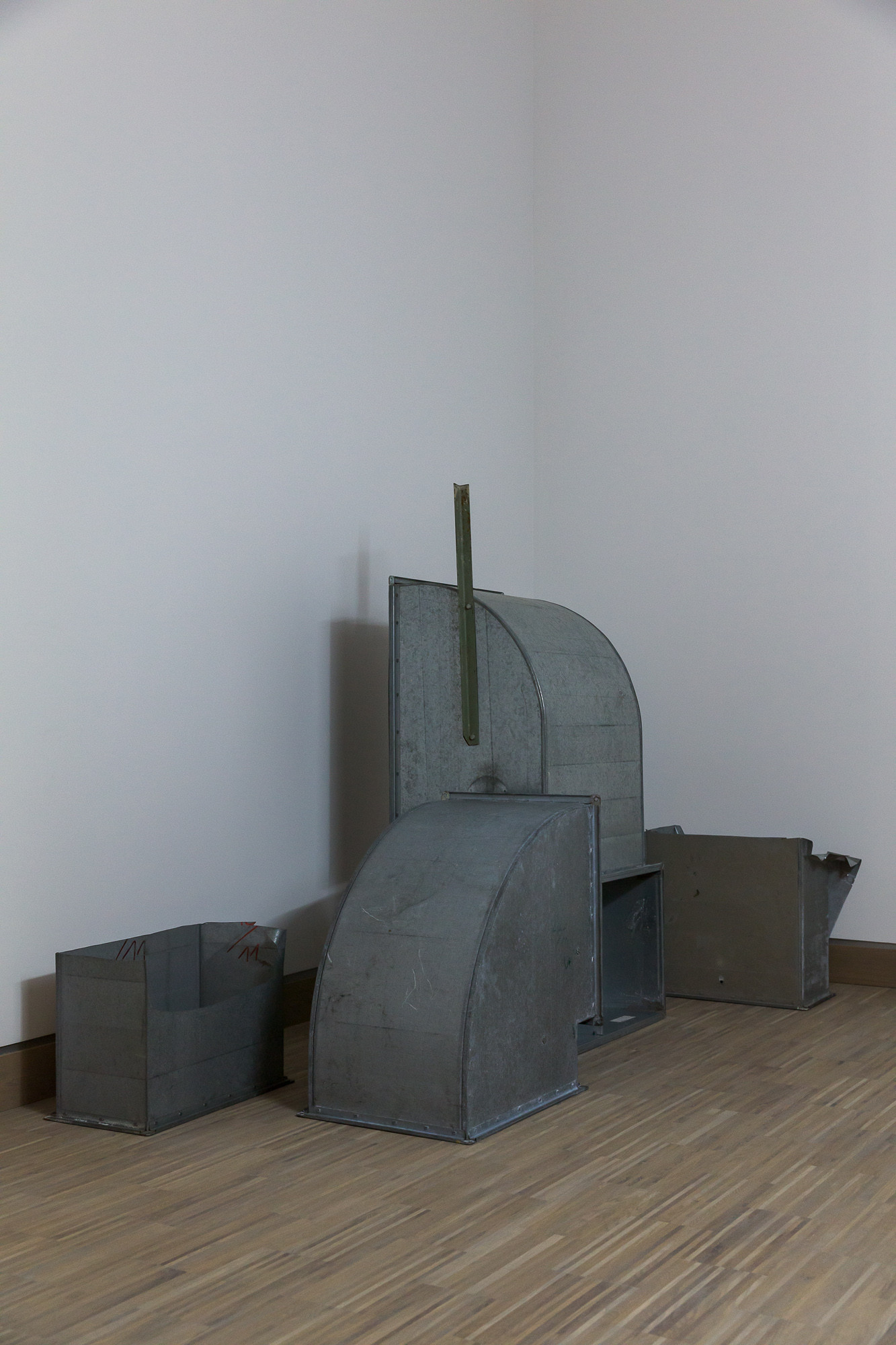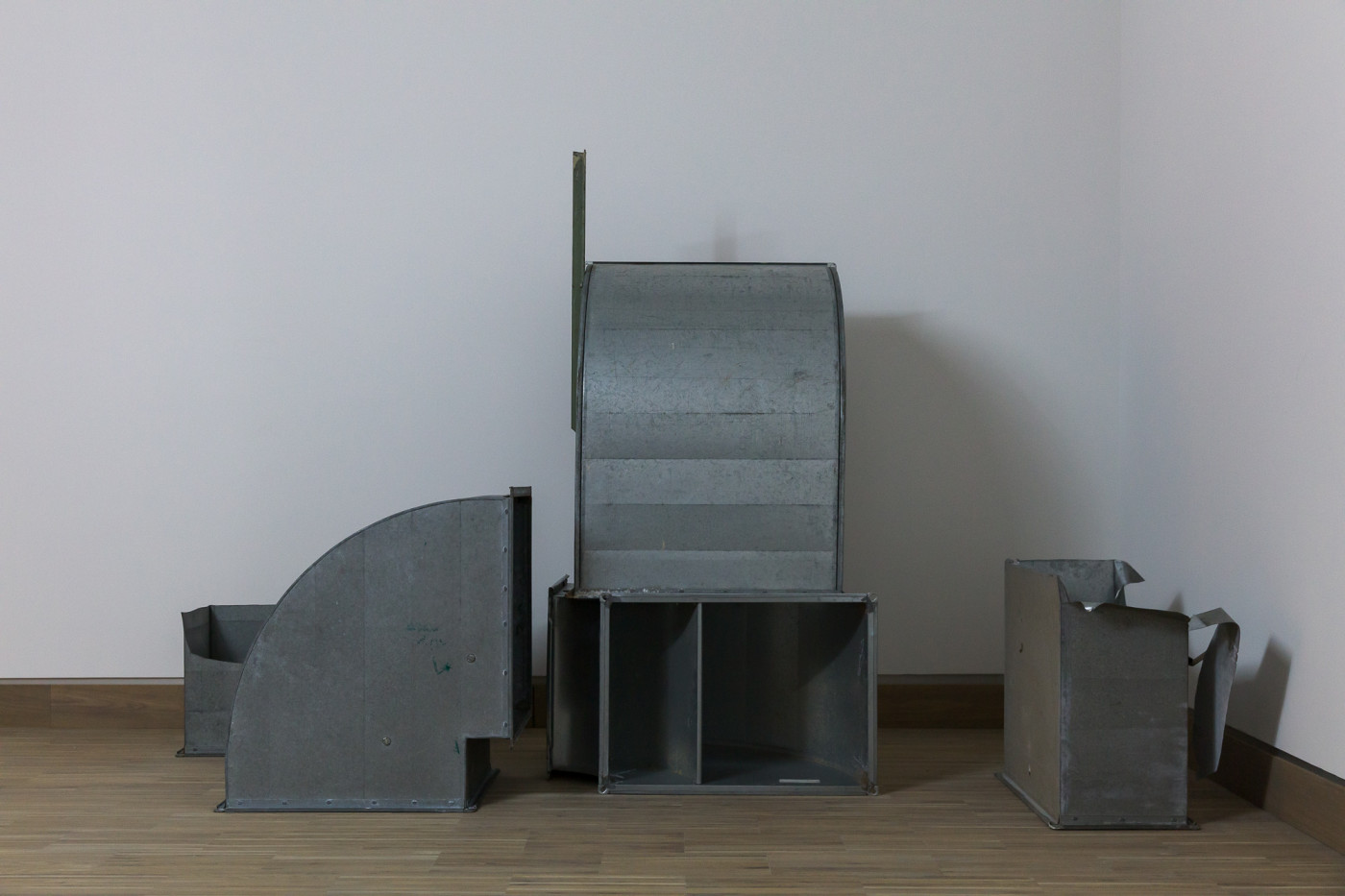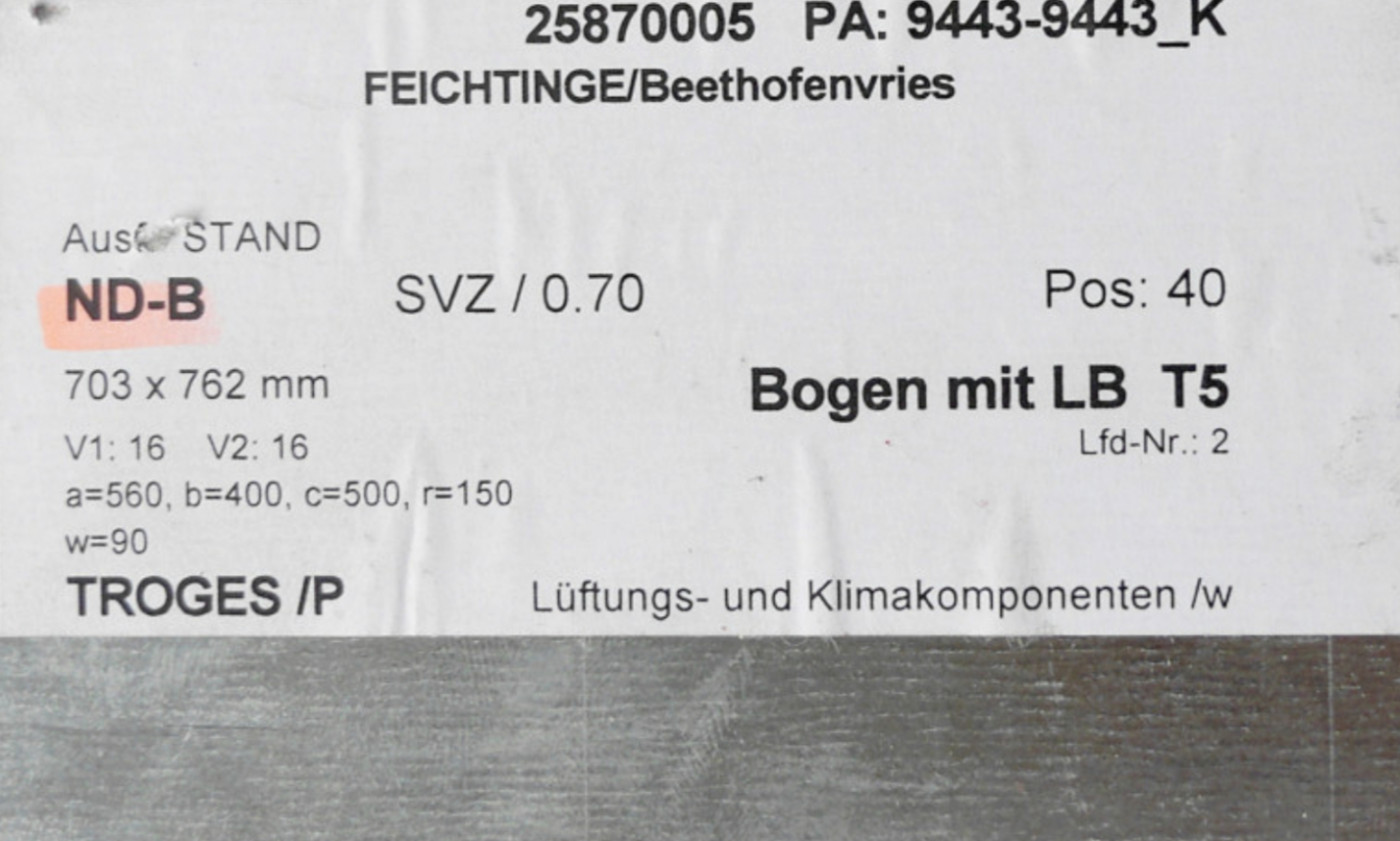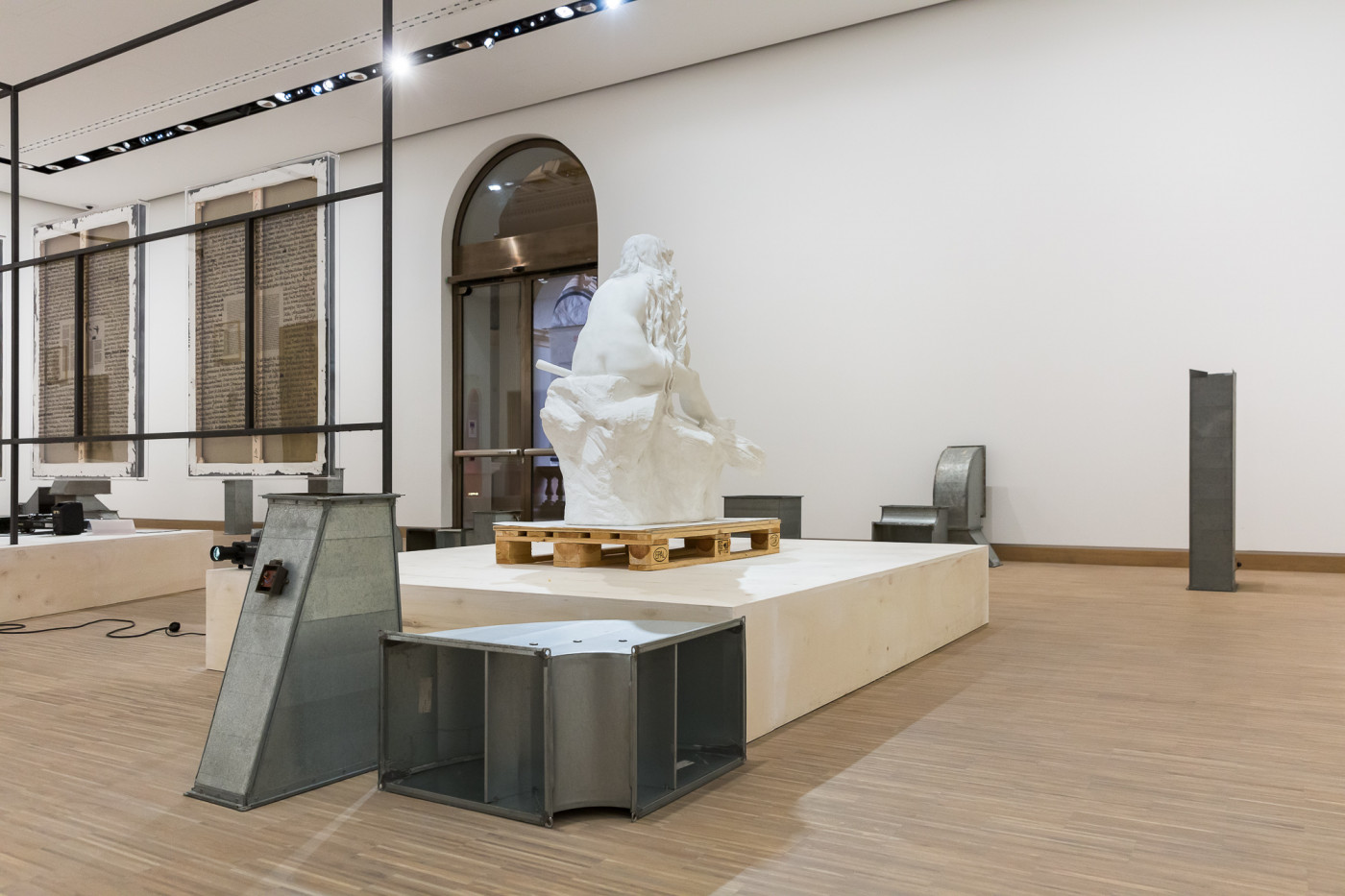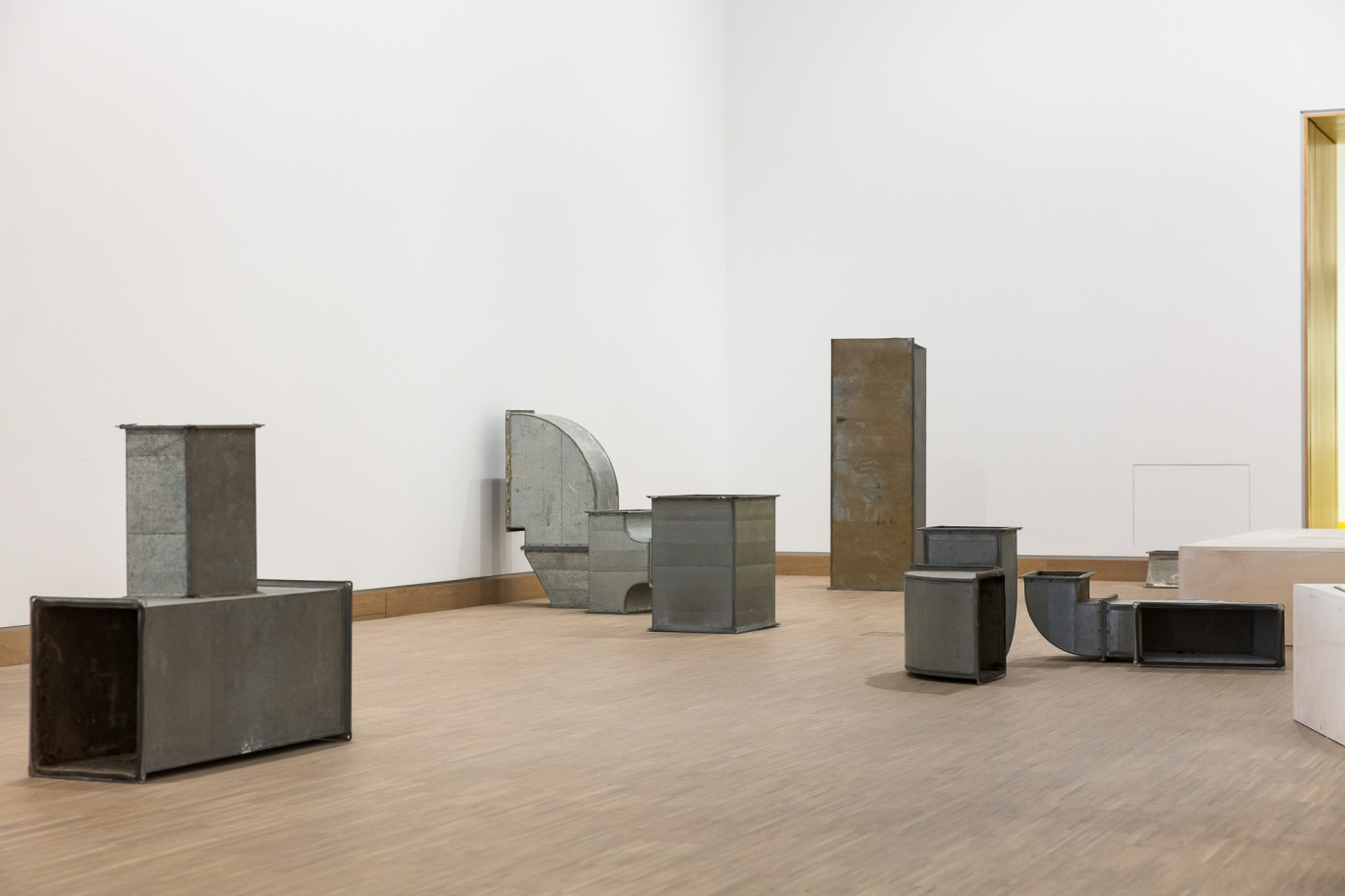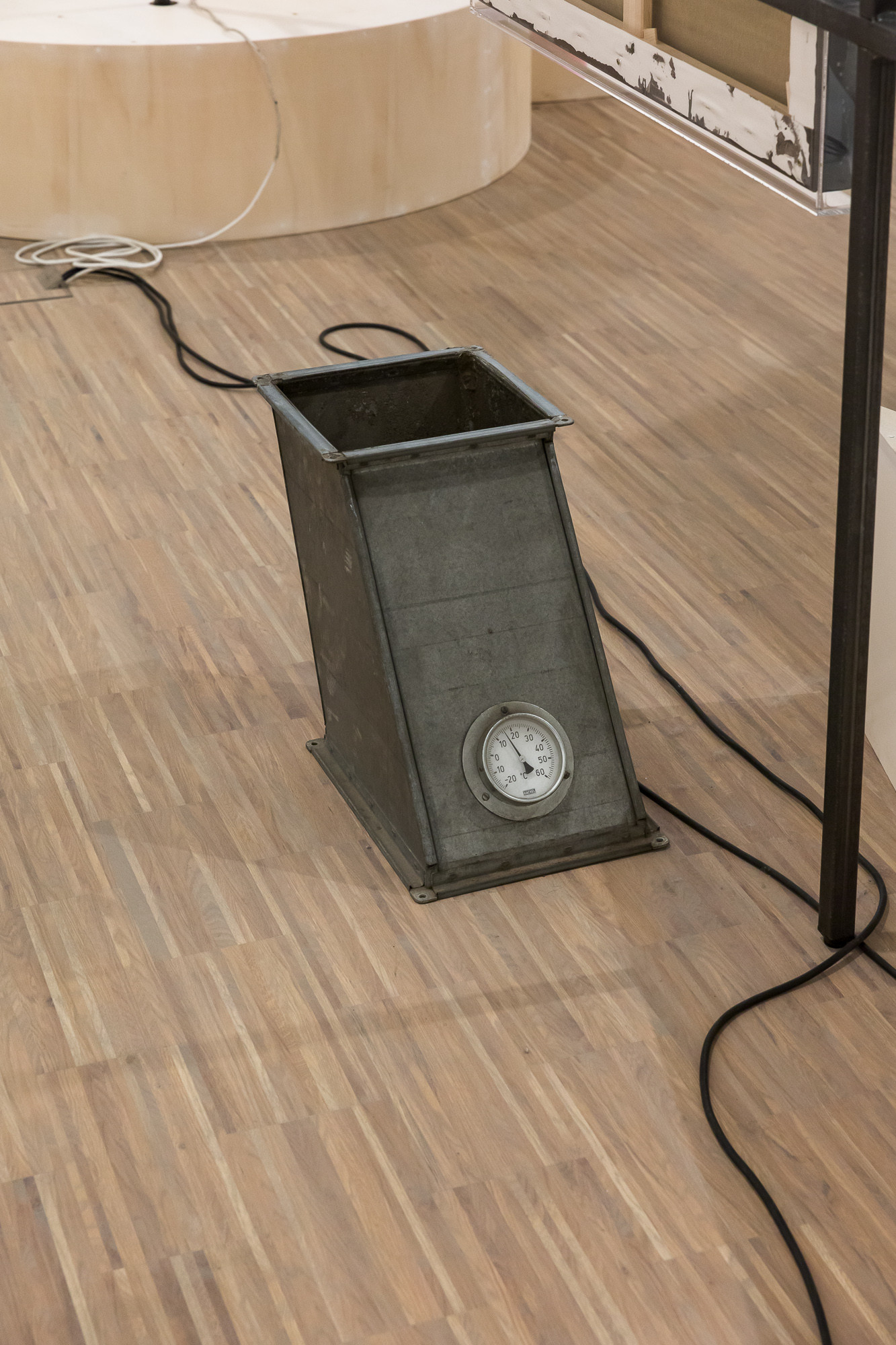Das Alltägliche ist das Unbestimmbare
Die Arbeiten von Max Schaffer haben etwas gemeinsam, so unterschiedlich sie sein mögen in ihren medialen Ausformungen, in den Genres, die sie berühren, oder in der unterschiedlichen Zeitdauer, für die sie je spezifisch erscheinen. Gemeinsam ist ihnen das Prinzip, dass man irgendwie immer zu spät dran ist, um die Welt noch einmal neu zu entwerfen. Was dann bleibt, ist die Auseinandersetzung einer Kultur des Vorgefundenen, die aber ihrerseits immer zu früh dran war, um die richtigen Entscheidungen getroffen zu haben. Was bleibt, ist für diesen Raum zwischen dem zu Frühen und dem zu Späten eine Sprache zu finden, die sich von beiden emanzipiert – und sei es die Sprache für eine unmögliche Gegenwart, die sich gleichzeitig als Modell ihrer selbst versteht: als Bild einer Gegenwart, die die Gegenwart selbst ungegenwärtig erscheinen lässt.
Eine Form, mit dieser Kultur des Vorgefundenen umzugehen, besteht für Max Schaffer wie in dieser Arbeit darin, auf seinen Wegen durch die Stadt Materialien, Motive oder Objekte zu entdecken, die er sich dann (erlaubter oder unerlaubterweise) aneignet und einem neuen Verwendungsprozess zuführt. Das Spektrum reicht von Handläufen für Treppen, Markisen, ausgedienten Möbel und Baumaterialien bis zu den Überbleibseln einer Lüftungsanlage, die in diesem Fall von der Secession stammt: ein Haufen metallener »Fundstücke«, die nicht nur ob ihrer Form an das vergessene Archiv einer an Minimalismus und modernistischem Funktionalismus orientierten Materialsammlung erinnern, sondern ob ihrer Funktion und der Ausstellungsgeschichte der Secession auch sehr heterogene künstlerische Luft inhaliert, gefiltert und gespeichert haben. Was da vor den Mauern der Secession »zwischengelagert« war, hat den Charme der Relikte einer institutionellen Lungentransplantation. Und die entsprechenden Bronchien wurden mit dem Odem von Klimt und Zobernig bis Renée Green oder Fischli und Weiss gefüllt. Für seine jetzige Ausstellung hat Max Schaffer diese kunsthistorisch patinierten Luftröhren in die Galerie Senn manövriert, um sie wieder der institutionellen Spirale einzuschreiben, der sie entnommen wurden. Aus materialer Sicht bedeutet die Ausstellung von Max Schaffer gewissermaßen eine Retrospektive aller Ausstellungen der Secession der letzten Jahre in der Galerie Senn – nur etwas anders als gewohnt: weniger kuratiert als vielmehr gefiltert durch einen Verwendungsprozess, der sich einerseits am Skulpturalen orientiert, um die Koordinaten eines Werk- oder Genrebegriffs der bildenden Kunst zu berühren, und andererseits durch das bloße Arrangement der Fundstücke auf die Geste weist, auf den Akt des Inszenierens – wenn man so will: auf eine performative Figur. Das Arrangement lenkt den Blick auf den manifesten Umgang mit dem Material, auf das Verschieben, Ausrichten, Verrücken, Anordnen, Umstellen und Ausstellen, kurz: auf eine Ästhetik des Handelns, des Handhabens und Handlings. Weil die Frage, warum etwas hier hin oder da hin, so und so gestellt, gelegt, verschoben und verrückt wurde, gibt es keine Antwort, sondern nur die Einsicht, dass es eine Entscheidung dafür gegeben hat, die auch anders ausfallen hätte können. In diesem Sinne vermittelt sich neben der Geste auch eine Ästhetik der Entscheidung, die nur getroffen werden kann, wenn eine Situation unbestimmt oder unbestimmbar ist. Das Gesetz dahinter basiert auf einem Realitätsbegriff, der davon ausgeht, dass sich der politische, soziale, ökonomische oder kulturelle Alltag wesentlich und expansiv durch unbestimmbare Situationen auszeichnet, und kein Wissen dafür ausreicht, begründet eine Entscheidung treffen zu können und doch unentwegt entscheiden zu müssen. Was dann als Wirklichkeit erscheint, erscheint entschieden riskant und so künstlerisch wie alltäglich.
Andreas Spiegl
